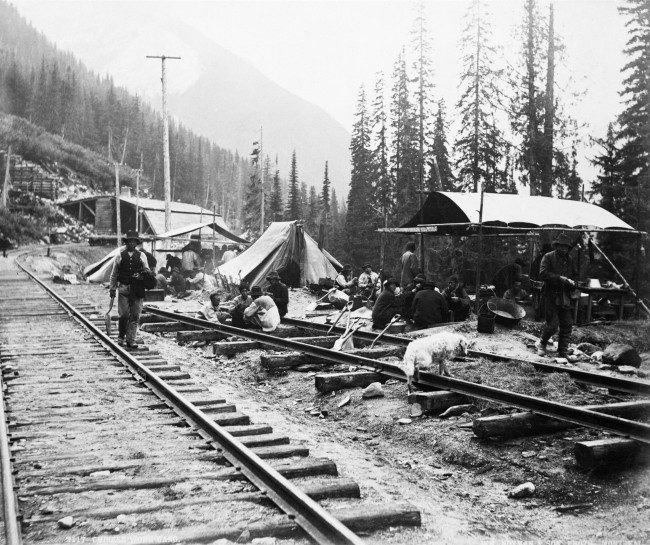Inducted 2008
About 17,000 Chinese workers came to western Canada during the early 1880s to work on the treacherous railroad route between Port Moody and Eagle Pass in British Columbia. Although some returned home once the Canadian Pacific Railway was finished, many remained on the west coast, making the new nation their home.
In 1871, British Columbia agreed to become part of Canada on one condition: the federal government must build a railroad to connect B.C. with the rest of the provinces within ten years. British Columbia requested labourers from the British Isles, intending them to become naturalized citizens after the railroad was completed, but Prime Minister John A. Macdonald decided to use Chinese workers, to reduce costs. While other railway workers earned from $1.50 to $2.50 per day, Chinese workers were paid only $1.00.
Contractors for the Canadian Pacific Railway (CPR) usually gained Chinese workers in one of two ways. Either they recruited them from the large immigrant population that had settled around the goldfields in California and British Columbia or they used Chinese companies to supply workers directly from China and Taiwan.
The Chinese labourers were required to perform the regular duties assigned to all railroad labourers, but they also faced heavier, more dangerous work due to the rugged environment that the railroad route took through the mountains. They were required to clear a path through dense forests and rocky terrain, blast tunnels through the mountains and construct bridges over the rivers and valleys. Loss of life along this stretch of the railroad was unusually high because of landslides, cave-ins, and incompetent management of dynamite blasts.
Life in the camps was not easy. While it was typical in North America for labourers to live in tents and cook outdoors while the railroad was under construction, the extreme weather conditions of the mountain environment made life in the camps very harsh for the Chinese workers, especially during the winter.
Many were the essential work force that completed the mainline tracks which stretched 543 kilometres (338 miles) through British Columbia.After the Last Spike ceremony in November 1885, many Chinese workers continued to live in Canada.


